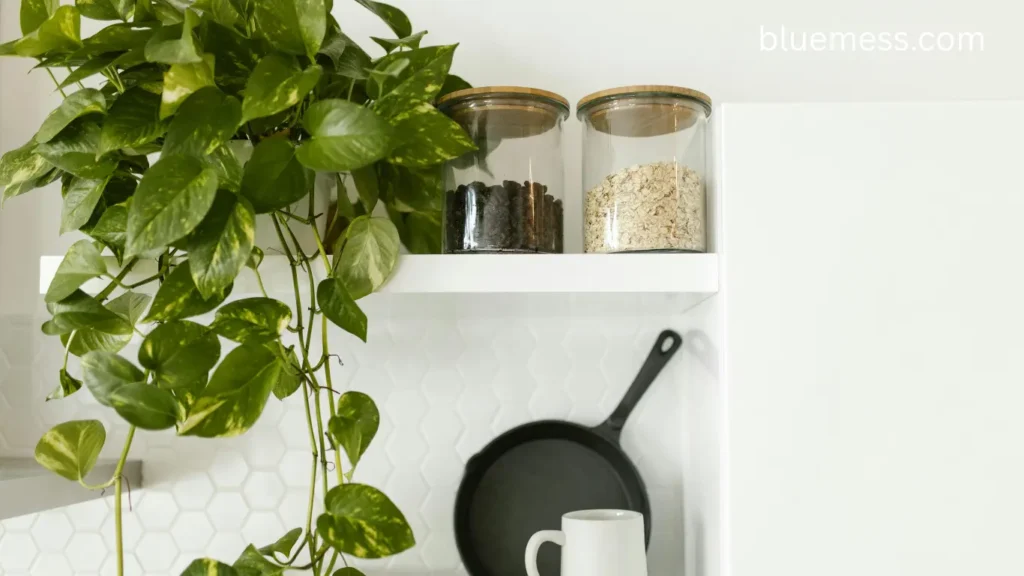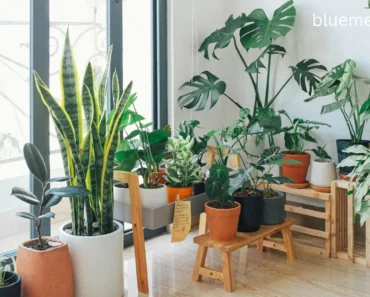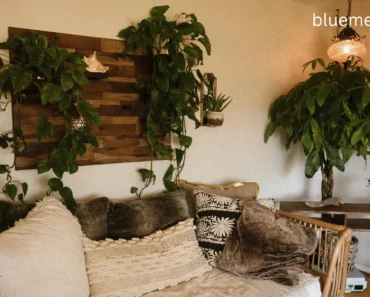
Table of Contents
Hey There, Future Plant Parent! Let’s Talk Jade Pothos
Want to turn your place into a green paradise but worry you’ll kill everything? Meet your new best friend: Jade Pothos. This trailing plant with heart-shaped leaves is the golden retriever of houseplants—super friendly, nearly foolproof, and always a delight.
Even though this plant is tough, you may have some hiccups—yellow leaves, bugs, or slow growth. Don’t panic! I’ll show you how to keep your Jade Pothos happy and healthy.
We’re covering the basics (where to put it) and some tricks (like making plant babies). Fun fact: it’s nicknamed “devil’s ivy” because it’s basically indestructible. I’ve forgotten to water mine for… way too long… and it still forgave me!
Quick heads up before we dive in: This pretty baby is toxic to pets and kids if they munch on it. So if you’ve got a cat that thinks everything’s a salad or a toddler in their “taste everything” phase, keep this plant up high!
Getting to Know Your New Green Buddy
The Official Stuff (But Make It Fun)
Let’s get the boring botanical bits out of the way:
- What everyone calls it: Jade Pothos (or “that pretty green trailing thing”)
- What scientists call it: Epipremnum aureum ‘Jade’ (fancy, right?)
- Plant family: Araceae (basically, it’s got cool cousins)
- What it is: A vine that just wants to climb or hang out
What Makes Jade Pothos Special?
So what’s the big deal about this pothos? Unlike its show-off siblings with splashy variegation, the Jade Pothos boasts solid green leaves that are thick, shiny, and gorgeous. Think emerald green with spa-level glossiness.
Here’s a cool tidbit: this plant is actually a happy accident! It’s a natural mutation of the golden pothos that decided, “Nah, I’m gonna be all green and fabulous.” The leaves are chunkier and sturdier than other pothos varieties, which honestly makes them look even more lush.
How Big Does This Thing Get?
In perfect conditions, this plant can grow 20-40 feet long, but it’s not going to take over overnight. Most keep it smaller, cascading from a shelf or climbing a moss pole.
On average, this plant can live about 10 years, but here’s the cool part – you can basically make it live forever by taking cuttings and growing new plants. It’s like cloning, but with more dirt and less sci-fi.
Oh, and bonus points: it supposedly cleans your air too. Can’t hurt, right?
The Ultimate “How Not to Kill Your Jade Pothos” Guide
A. Let There Be Light (But Not Too Much!)
The Sweet Spot: To keep your Jade Pothos happy, give it bright, indirect light. Place it so it can see daylight but not have direct sun on its leaves. For example, use a north-facing window or place it in the middle of a bright room with south-facing windows.
Here’s why I love this plant: it’s not a diva about light. Got a dim office or bathroom with one tiny window? This trooper will still hang in there. It won’t grow as fast or look quite as Instagram-worthy, but it’ll survive. With good light, expect bigger leaves, faster growth, and sometimes even some surprise yellow streaks (fancy variegation showing up to party!).
Don’t Be That Person: Whatever you do, don’t stick it in direct sunlight. Trust me, I learned this the hard way. Direct sun will literally give your plant a sunburn, and nobody wants crispy brown patches on their beautiful leaves.
Pro Tips from Someone Who’s Made All the Mistakes:
- Spin that plant around once a week so it doesn’t grow all lopsided reaching for light
- Got a super dark corner? LED grow lights are your friend (and they’re not expensive!)
- If your leaves are getting smaller and further apart, your plant’s basically saying “Hey, I need more light!”
B. Water: The Eternal Struggle
To water correctly, stick your finger into the soil up to your first knuckle. If it’s dry, it’s time to water. If still moist, wait a few days. You can also pick up the pot—if it’s light, your plant is ready for a drink.
The Jade Pothos is like that friend who never complains. It can handle you forgetting to water it way better than you drowning it with love. Seriously, more plants die from too much water than too little. When you overwater, the roots can’t breathe and start rotting – it’s not pretty.
But don’t go to the other extreme! If you ignore it for too long, you’ll get sad, droopy leaves with crispy brown tips. Nobody wants that.
Seasonal Vibes: Water more in spring and summer when it’s growing like crazy, then chill out in fall and winter when it’s taking a breather.
Water Snob Alert: If you’re fancy (or have hard water), use filtered or distilled water. Or just let your tap water sit out overnight – it’s like letting wine breathe, but for plants. And please, use room temperature water. Nobody likes a cold shower, including your plant!
How to Water Like a Pro: Pour water slowly around the edges of the pot until some comes out the bottom drainage hole. Or, try bottom watering: place the pot in a bowl of water for 20 to 30 minutes and let the roots soak up moisture from below. Always let the pot drain thoroughly afterward.
C. Dirt Talk: Getting the Soil Right
Your Jade Pothos isn’t picky, but it hates soggy soil. Regular potting mix is usually too heavy, so jazz it up with perlite or orchid bark for better drainage.
Wanna get fancy? Make your own mix:
- 1 part peat moss or coco coir (for moisture)
- 1 part perlite (for drainage)
- 1 part pine bark (for texture)
- A sprinkle of charcoal if you’re feeling extra (helps keep things fresh)
Plan to repot every year or two. Repot when water runs through without soaking in, roots stick out of drainage holes, or your plant looks unhealthy despite proper care.
- Water runs straight through without soaking in
- Roots are literally escaping through the drainage holes
- Your plant looks sad even though you’re doing everything right
Moving Day Tips:
- Do it in spring or summer when your plant’s feeling peppy
- Go up just one pot size (two max) – they actually like being a bit cozy
- Don’t mess with the roots too much – just plop the whole root ball in the new pot
- Water well after and keep it in bright, indirect light while it settles in
D. Temperature & Humidity: Creating a Tropical Paradise (Sort Of)
Good news! Your Jade Pothos likes the same temps you do – between 65-85°F. If you’re comfortable, it’s comfortable. Just keep it away from:
- Drafty windows in winter
- AC vents blasting cold air
- Heaters that’ll dry it out
As for humidity, these tropical babies love moisture in the air, but they’re not going to throw a fit if your home’s a bit dry. Mine does fine at regular house humidity. Want to pamper it? Stick it in the bathroom where it can enjoy your shower steam, or group it with other plants to create a little humid microclimate.
Other humidity hacks:
- Set it on a tray of pebbles with water (fancy!)
- Get a humidifier (your skin will thank you too)
- Mist it occasionally (but don’t go crazy – too much can cause fungus)
E. Food for Your Plant (Yes, Plants Eat Too!)
Here’s the thing – Jade Pothos isn’t a hungry plant. It’s happy with decent soil and doesn’t need extra feeding.
If you want it to really thrive, feed monthly or bi-monthly in spring or summer with balanced liquid fertilizer at half strength. Apply to damp soil to avoid burning the roots, and skip feeding in fall or winter.
Don’t Overdo It: Too much fertilizer = brown, crispy leaf tips. Not cute. When in doubt, less is more.
Going Natural: Wanna be all organic? Try:
- Liquid seaweed (plants love this stuff)
- Fish emulsion (stinky but effective)
- Worm poop tea (yes, really – it’s called castings)
Every few months, give your plant a good flush with plain water to wash out any salt buildup. Think of it as a detox cleanse for your plant!
F. Giving Your Plant a Haircut
Pruning helps your Jade Pothos grow fuller. When it looks leggy or thin, use clean scissors to trim the stems just above a leaf node (where leaf meets stem). This encourages new, bushy growth.
Spring and summer are the best times for a trim. Just snip right above a leaf node (where the leaf meets the stem) and boom – your plant will sprout new growth from that spot.
Weekly Spa Treatment: Wipe down those leaves once a week with a damp cloth. It’s like giving your plant a facial – removes dust, helps it breathe better, and gives you a chance to check for bugs. Plus, shiny leaves just look better!
G. Making Plant Babies (It’s Easier Than You Think!)
This is where it gets fun! Propagating Jade Pothos is simple. To start, identify a healthy stem with three healthy leaves, and prepare a clean pair of scissors for cutting.
The Water Method (My Favorite):
- Find a healthy stem with at least 3 leaves
- Cut at an angle about an inch below a leaf (use clean scissors – we’re not savages)
- Pull off the bottom leaf
- Stick the cutting in a jar of water, with the leafless end submerged and the leaves above the water. A clear glass lets you watch the roots grow.
- Put it somewhere bright but not sunny
- Change the water weekly (or when you remember…)
- In a few weeks, you’ll see roots forming! Once they’re about two or three inches long, plant your cutting in fresh potting mix and keep it lightly moist until established.
- Keep the soil moist for the first few weeks while it gets established
You can also stick cuttings directly in soil, but water propagation is more fun because you can watch the roots grow. It’s weirdly addictive!
When Things Go Wrong (Because Sometimes They Do)
Yellow Leaves Are Trying to Tell You Something
Usually it’s one of these culprits:
- Overwatering (the usual suspect) – Let it dry out more between waterings
- Underwatering (less common but happens) – Step up your watering game
- Bugs (ugh) – Check for tiny spider webs or white fuzzy stuff
- Old age (it happens) – Bottom leaves yellowing? Totally normal
- Too much sun – Move it away from that window
Brown Tips = Your Plant’s Having a Bad Hair Day
This usually means:
- Air’s too dry (hello, winter heating!)
- Too much fertilizer (ease up, tiger)
- Tap water chemicals (try filtered water)
- You forgot to water for… a while
The Dreaded Droop
If your plant�s droopy, check soil moisture, temperature, bugs, or pot size. Adjust care as needed.
- Temperature okay? Not too hot or cold?
- Look for bugs (they’re sneaky)
- Might need a new pot if it’s been years
Not Growing? Looking Sparse?
Your plant’s probably saying:
- “I need more light!” (most common issue)
- “Feed me!” (but just a little)
- “This pot is too small!”
- “Can you please water me consistently?”
Leaves Doing the Twist?
If leaves are curling up:
- You’re probably being inconsistent with watering
- It might be getting too much direct light
- Could be temperature stress
Bug Brigade
Nobody likes uninvited guests! Common crashers include:
- Spider mites (tiny dots and webbing)
- Mealybugs (white cotton ball looking things)
- Fungus gnats (annoying little flies)
Solution? Quarantine the patient, spray with neem oil or insecticidal soap every week until they’re gone. Check other plants too – bugs love to travel!
The Dreaded Root Rot
If plant�s wilted but soil�s wet, smells bad, or has brown mushy roots, suspect root rot. Repot with fresh soil and prune bad roots.
Emergency surgery time:
- Take it out of the pot
- Cut off all the gross brown mushy roots
- Repot in fresh, dry soil
- Water WAY less going forward
- Cross your fingers!
Growth Expectations (Spoiler: It’s Fast!)
In good conditions, your Jade Pothos can grow a foot or more per month during growing season. Yeah, you read that right! Of course, in winter it’ll slow down – think of it as hibernation mode.
What affects growth:
- Light (more light = faster growth)
- Water (consistent but not too much)
- Temperature (warm and stable)
- Soil (fresh and well-draining)
- Your vibes (okay, not really, but talking to plants doesn’t hurt!)
Jade Pothos vs. The Competition
Let’s clear up some confusion:
Other Pothos Types:
- Golden Pothos: Has yellow splotches, slightly smaller leaves
- Marble Queen: Super variegated, grows slower, bit more high-maintenance
- Neon: Bright chartreuse, like a highlighter exploded
That Philodendron Everyone Confuses It With: The Heart Leaf Philodendron looks similar but has:
- Thinner, bendier stems
- Velvety leaves (Jade Pothos is waxy)
- Needier water requirements
FAQ (Because I Know You’re Wondering)
Will my cat/dog/toddler die if they eat this?
Not die, but they’ll have a really bad time. It’s toxic and will make them sick. Keep it high up!
How fast will it actually grow?
In good conditions? 12-18 inches per month in growing season. In winter or low light? Maybe a few inches.
Can I grow it outside?
Only if you live somewhere that never gets below 50°F. For most of us, it’s an indoor baby.
What kind of light is best?
Bright, indirect light is chef’s kiss. But it’ll tolerate whatever you’ve got.
How often should I really water this thing?
When the top inch or two of soil is dry. Could be weekly, could be every two weeks. Your house, your rules!
The Bottom Line
Look, if you want a plant that’ll make you look like you know what you’re doing without actually requiring much skill, the Jade Pothos is your guy. It’s forgiving, gorgeous, and grows fast enough that you’ll feel accomplished.
Whether you’re attracted to its “I’ll clean your air” sales pitch, the fact that you can make infinite plant babies, or you just think it’s pretty (valid!), this plant won’t let you down. Well, unless you literally drown it, but we’ve covered how not to do that!
So go ahead, start your jungle! Get yourself a Jade Pothos, follow these tips (or at least some of them), and watch your space transform. And hey, when your friends ask how you keep such a beautiful plant alive, you can just smile mysteriously and change the subject. Your secret’s safe with me! 🌿
Author
George Wine is a seasoned gardening expert with over 20 years of experience in the field of horticulture. His passion for plants and nature has driven his career, where he has honed his skills in various aspects of gardening, from landscape design to plant care. George holds a Master of Science in Horticulture from the University of California, Davis (UC Davis), a prestigious institution known for its research and advancements in plant science.
Throughout his career, George has worked with a diverse range of clients, offering tailored solutions to enhance outdoor spaces and create thriving gardens. His knowledge and expertise allow him to provide invaluable advice, ensuring that both novice and experienced gardeners achieve their gardening goals. Whether you’re looking for tips on sustainable gardening practices, innovative design ideas, or advice on specific plant species, George is here to help you cultivate the garden of your dreams.






